If you've ever had a migraine headache, you know how debilitating they can be. Nothing will bring your productivity (and everything else) down faster than a bad migraine.
Fortunately, there are several substances that can help, many of which are nootropics. That's what we're going to look at in this article: nootropics for migraine headaches. But first, let's see what exactly migraines are.
What Are Migraine Headaches?
Just about everyone has experienced a headache at some point in their life. Whether it's the result of too much sinus pressure from the common cold or running head first into a tree (like I did when I was ten-years old – worst headache of my life), headaches are something we all get from time to time.
A headache is when you experience pain in your face, head, or neck. Lots of things can cause you to get a headache: stress, not getting enough sleep, dehydration, fatigue, certain medications and recreational drugs, loud noises, having a cold, viral infections, and dental issues, to name a few.1 You can even get a headache from eating or drinking something cold too quickly (we used to call it “brain freeze” when I was a kid).
Headache disorders are common. In fact, headache disorders are one of the most common disorders of the nervous system. Around the world, it's estimated that as much as 50% of the adult population suffers from some form of headache disorder.2 Between 50-66% of adults between 18-65 years old have had at least one headache within the past year. And among those people, at least 30% report experiencing migraines.
According to the leading authority on headaches, the International Headache Society, there are over 200 types of headaches.3 Some are considered primary while others are considered secondary.4 Primary headaches, which make up 90% of all headaches, are benign and are not caused by an underlying disease. Secondary headaches are caused by an underlying illness like an infection, tumor, vascular disorder, or head injury.
 Migraines are primary headaches and their underlying cause is unknown.5 Researchers believe that they result from a combination of environmental and genetic factors.6 Migraines are headaches that can be anywhere from moderate to severe and are often recurrent. And they are one of the main reasons for disability.7
Migraines are primary headaches and their underlying cause is unknown.5 Researchers believe that they result from a combination of environmental and genetic factors.6 Migraines are headaches that can be anywhere from moderate to severe and are often recurrent. And they are one of the main reasons for disability.7
A lot of people think that migraines are just really bad headaches, but it's more than just their severity that distinguish them from other types of headaches. Migraines aren't just headaches. That's only one migraine symptom. Other symptoms of migraines include nausea, dizziness, extreme fatigue, and sensitivity to sound, smells, or light.8
Tension-type headaches (TTH) are the most common type of headache.9 They make up about 90% of all headaches. Pain from tension headaches often spreads across both sides of the head and is often the result of stress, eyestrain, or hunger. Sinus headaches are another common type of headache. They usually occur when you're sick and your sinus passages swell up resulting in pain behind your nose, eyes, and cheeks. And then there are cluster headaches. They come in clusters and can be caused by bright lights, altitude, and physical exertion.
Migraines differ from these three common types of headaches in several ways. As mentioned above, migraines often result in not just headaches but also nausea, dizziness, fatigue, and increased sensitivity to sights and sounds. They can be incredibly painful, resulting in lost productivity and even permanent disability. A lot of suffers experience migraines in four distinct phases.
Migraine Phases
Prodrome phase – This phase happens in the hours or days leading up to a headache and can include altered mood, fatigue, irritability, stiff muscles, changes in bowel movements, and sensitivity to sounds and smells.10
Aura phase – An aura is a perceptual disturbance often associated with migraines. These sensory changes come on gradually and typically last less than an hour.11 They are often visual or auditory, though they can involve any of the senses.
Pain phase – Sometimes called the headache phase, this is when the headache happens. It often comes on gradually, affecting one side of the head with moderate-to-severe throbbing pain.12
Postdrome – These are the symptoms experienced after the headache. They can include a lingering soreness where the migraine was, impaired thinking that can last for several days, weakness, fatigue, mood changes, and feeling hungover.13
Now that we've taken a look at what migraines are, we can get to our list of nootropics for migraine headaches. Since the severity and underlying causes often vary from person to person, it's impossible to know what will work for you and what won't. If the first one-or-two things you try doesn't help, don't give up. I know it can be frustrating, but the only way to find what works for you is to experiment on yourself.
Nootropics For Migraine Headaches
1. Caffeine
We'll start our list of nootropics for migraines with a substance you likely use already: caffeine. It's the most-widely-used cognition-enhancing drug around the world. There's no question about caffeine's ability to increase wakefulness and focus. But can it help to reduce the symptoms of a migraine?
 Studies show conflicting results. Under some circumstances, caffeine can make migraines and other types of headaches worse. If you're a regular coffee drinker (or regularly consume caffeine from other less-common sources), not having your daily cup (or two, three, ten – whatever) can cause you to get a migraine.14 Headaches are a common symptom of caffeine withdrawal.
Studies show conflicting results. Under some circumstances, caffeine can make migraines and other types of headaches worse. If you're a regular coffee drinker (or regularly consume caffeine from other less-common sources), not having your daily cup (or two, three, ten – whatever) can cause you to get a migraine.14 Headaches are a common symptom of caffeine withdrawal.
However, caffeine can potentially help a migraine. When taken with ibuprofen, acetaminophen, and/or aspirin, caffeine can help to increase their pain-relieving effects.15 That's why a number of common over-the-counter (OTC) migraine relief products contain caffeine.
While caffeine won't prevent a migraine, it can help to relieve some migraine symptoms. And if you're a regular consumer of caffeine, make sure your migraines aren't the result of caffeine withdrawal. Even going one day without it can result in migraines for some people.
2. Magnesium
This is an essential mineral that has a number of function in the body and brain. A number of people have found magnesium supplements to have a nootropic effect. Users often report that it helps them to sleep better and decrease anxiety. And magnesium has also been shown to help some people who suffer from migraine headaches.
Magnesium levels have been shown to be low in the brains of people having a migraine.16 And several studies have demonstrated that taking supplemental magnesium can significantly reduce both the severity and frequency of migraine attacks.17
If you suffer from migraines, magnesium should be one of the first substances you try. It is very safe, easily available, and relatively inexpensive. However, not all forms of magnesium are the same. I recommend magnesium glycinate. It is efficiently absorbed by the body and brain and does not cause the gastrointestinal discomfort that other forms of magnesium (like magnesium oxide, the form commonly sold in pharmacies and grocery stores) often do.
3. Memantine
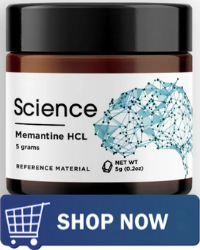
Memantine has been the subject of several studies on treating migraines. A 2017 study found that the headache frequency of participants given memantine for 30 days was reduced from about 10 a month to just 5.18 Another study from 2008 also found that memantine significantly reduced the frequency and severity of migraines in people who did not respond to other treatments.19
If you suffer from migraines and have already tried a number of treatment options that didn't work, you might want to consider memantine. It seems to work especially well in people with treatment-resistant migraines. However, memantine can have side effects for some people. They may include sweating, nausea, diarrhea, dizziness, coughing, and others.20 It's probably best to try some of the other substances on this list with fewer potential side effects before trying memantine. But if you don't get the relief from them that you need, memantine might be right for you. The migraine relief that people get from memantine usually outweighs any side effects they may experience.
4. 5-HTP
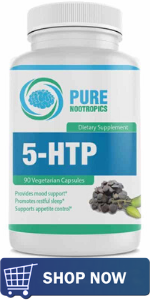
Some people find that taking 5-HTP helps to reduce the severity and frequency of migraines. And there is a lot of science to support its use dating back several decades. A study from 1984 found that 5-HTP reduced headaches among people suffering from a variety of subtypes of migraines.21 An even-older study from 1972 found 5-HTP to be just as effective at preventing migraines as conventional treatments.22
5-HTP is generally very well tolerated. Side effects are uncommon and usually mild. They may include drowsiness and upset stomach. For these reasons, most users prefer to take 5-HTP at night before bed.
5. Melatonin
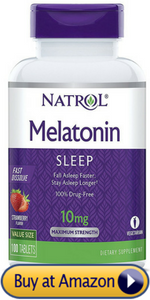
A lot of melatonin users have found relief from their headaches with this supplement. And there's plenty of science to support its use in preventing migraines. A 2016 study compared melatonin, amitriptyline, and placebo for migraine prevention.23 Amitriptyline is known to prevent migraines but can have a number of side effects. This study concluded that melatonin was more effective at preventing migraines than amitriptyline (or placebo) without the side effects.
A review from 2019 looked at 7 different studies on melatonin and migraines.24 The researchers concluded that melatonin is an effective treatment for preventing migraine headaches. However, it may take up to 3 months of daily use before its full prophylactic (preventative) effect becomes noticeable.
If you suffer from frequent migraines, melatonin might be a good option for you. It's easily available, inexpensive, generally very safe, and significantly reduces the frequency of headaches for a lot of migraine sufferers.
6. Vitamin D
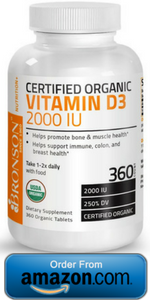
Nootropic users often take vitamin D to increase energy levels, boost mood, and improve overall health. It's extremely safe and for some people it works wonders. It's likely that the people who benefit the most from taking vitamin D are treating an underlying deficiency. According to a 2011 study, nearly half of Americans are deficient.25 And studies show that a high percentage of migraine sufferers are also deficient in vitamin D. A comprehensive review from 2019 showed that anywhere from 45-100% of migraine sufferers are vitamin D deficient.26
Studies also show that taking vitamin D can significantly reduce the frequency of migraines for a lot of sufferers. A 2018 study done on adults found that vitamin D supplementation was able to cut the frequency of migraines nearly in half.27 And a 2014 study done on pediatric migraine sufferers already taking amitriptyline found that adding vitamin D reduced the frequency of headaches even more than just the amitriptyline by itself.28
Because of its safety, vitamin D is an excellent option if you're trying to reduce the frequency of migraine headaches. If you're one of the millions of Americans (or others worldwide) who do not get enough vitamin D, supplementing with it may reduce the frequency of migraines and also provide a modest boost in both mood and energy levels.
Conclusion
If you suffer from migraines, you know how awful they can be. Hopefully there's something on this list that can help you. And this is only a partial list. There are other nootropics that may also be able to help. But the ones above have the most research behind them to support their use.
Other supplements with nootropic properties that might be worth looking into if you don't find any of the above helpful include fish oil/omega-3 fatty acids (especially EPA), acetyl L-carnitine (ALCAR), alpha-lipoic acid (ALA), Coenzyme Q10, and cannabis (THC and CBD in particular).
And I should also mention the importance of fitness and nutrition. This article is about nootropics for migraines, so I didn't dive into what a huge role diet and exercise can play in migraine frequency and severity. But many people have found relief by simply changing their diets and increasing the amount of exercise they get.
Hopefully this article doesn't apply to you. I wouldn't wish a migraine on my worst enemy. If you've read this far, though, you probably are one of the unlucky people who suffer from these debilitating headaches. But don't get discouraged. Between all the substances listed above, you'll likely be able to find a nootropic or two that will give you at least some relief from your migraines.
Have you tried any of the supplements above for migraine headaches? How about any other supplements not on this list? I'd love to hear about your experiences. Please leave your answers in the comment section below.
References
1Headache. (2018, January 11). Mayo Clinic. Retrieved February 28, 2020 from https://www.mayoclinic.org/symptoms/headache/basics/definition/sym-20050800
2Headache disorders. (n.d.). World Health Organization. Retrieved February 28, 2020 from https://www.who.int/en/news-room/fact-sheets/detail/headache-disorders
3Headache Classification Committee of the International Headache Society (IHS): The International Classification of Headache Disorders, 3rd edition. (2018). Cephalagia, 38(1):1-211.
4Young, C.B. (2012, January 3). Primary and secondary headaches. The John Hopkins Headache Center. Retrieved February 28, 2020 from https://web.archive.org/web/20140503222313/http://www.hopkinsmedicine.org/neurology_neurosurgery/specialty_areas/headache/conditions/primary_vs_secondary_headaches.html
5Robbins, M., & Lipton, R. (2010). The epidemiology of primary headache disorders. Seminars in Neurology, 30(2):107-19.
6Piane, M., Lulli, P., Farinelli, I., Simeoni, S., Fillippis, S., et al. (2007). Genetics of migraine and pharmacogenomics: some considerations. The Journal of Headache and Pain, 8:334-9.
7GBD 2016 Disease and Injury Incidence and Prevalence Collaborators. (2017). Global, regional, and national incidence, prevalence, and years lived with disability for 328 diseases and injuries for 195 countries, 1990-2016: a systematic analysis for the Global Burden of Disease Study 2016. The Lancet, 390(10100):1211-59.
8Migraine vs headache: how to tell the difference. (n.d.). Penn Medicine. Retrieve February 28, 2020 from https://www.pennmedicine.org/updates/blogs/health-and-wellness/2019/november/migraines-vs-headaches
9Ratini, M. (2018, May 20). Headache types: migraine or tension? WebMD. Retrieved February 28, 2020 from https://www.webmd.com/migraines-headaches/migraine-vs-tension-headache#1
10Lynn, J. (2004). The 5-minute neurology consult. Philadelphia: Lippincott Williams & Wilkins.
11Olesen, J. (2006). The headaches. Philadelphia: Lippincott Williams & Wilkins.
12Tintinalli, J., & Stapczynski, J. (2011). Tintinallis emergency medicine: a comprehensive study guide. New York: McGraw-Hill Medical.
13Bose, P., & Goadsby, P. (2016). The migraine postdrome. Current Opinion in Neurology, 29(3):299-301.
14Shmerling, R. (2019, September 30). If you have migraines, put down your coffee and read this. Harvard Health Blog: Harvard Medical School. Retrieved February 28, 2020 from https://www.health.harvard.edu/blog/if-you-have-migraines-put-down-your-coffee-and-read-this-2019093017897
15Silberstein, S., Armellino, J., Hoffman, H., Battikha, J., et al. (1999). Treatment of menstruation-associated migraine with the nonprescription combination of acetaminophen, aspirin, and caffeine: results from three randomized, placebo-controlled studies. Clinical Therapeutics, 21(3):475-91.
16Ramadan, N., Halvorson, H., Vande-Linde, A., Levine, S., Helpern, J., & Welch, K. (1989). Low brain magnesium in migraine. Headache, 29(9):590-3.
17Peikert, A., Wilmzig, C., & Kohne-Volland, R. (1996). Prophylaxis of migraine with oral magnesium: results from a prospective, mult-cinter, placebo-controlled and double-blind randomized study. Cephalagia, 16(4):257-63.
18Assarzadegan, F., & Sistanizad, M. (2017). Tolerability and efficacy of memantine as add on therapy in patients with migraine. Iranian Journal of Pharmaceutical Resarch, 16(2):791-7.
19Bigal, M., Rapoport, A., Sheftell, F., Tepper, D., & Tepper, S. (2008). Memantine in the preventative treatment of refractory migraine. Headache, 48(9):1337-42.
20Borghol, A., Kirkwood, A., & Hawawini, F. (2010). Memantine for the treatment of migraine. U.S. Pharmacist, 35(5):28-35.
21Bono, G., Micieli, G., Sances, G., Calvani, M., & Nappi, G. (1984). L-5HTP treatment in primary headaches: an attempt at clinical identification of responsive patients. Cephalagia, 4(3):159-65.
22Sicuteri, F. (1972). 5-hydroxytryptophan in the prophylaxis of migraine. Pharmacological Research Communications, 4(3):213-8.
23Goncalves, A., Ferreira, A., Ribeiro, R., Zukerman, E., et al. (2016). Randomized clinical trial comparing melatonin 3 mg, amitriptyline 25 mg and placebo for migraine prevention. Journal of Neurology, Neurosurgery & Psychiatry, 87:1127-32.
24Long, R., Zhu, Y., & Zhou, S. (2019). Therapeutic role of melatonin in migraine prophylaxis. Medicine (Baltimore), 98(3):1-11.
25Forrest, K., & Stuhldreher, W. (2011). Prevalence and correlates of vitamin D deficiency in US adults. Nutrition Research, 31(1):48-54.
26Ghorbani, Z., Togha, M., Rafiee, P., Ahmadi, Z., et al. (2019). Vitamin D in migraine headache: a comprehensive review on literature. Neurological Sciences, 40(12):2459-77.
27Gazerani, P., Fuglsang, R., Pedersen, J., Sorensen, J., et al. (2018). A randomized, double-blinded, placebo-controlled, parallel trial of vitamin D3 supplementation in adult patients with migraine. Current Medical Research and Opinion, 35(4):715-23.
28Cayir, A., Turan, M., & Tan, H. (2014). Effect of vitamin D therapy in addition to amitriptyline on migraine attacks in pediatric patients. Brazilian Journal of Medical and Biological Research, 47(4):349-54.

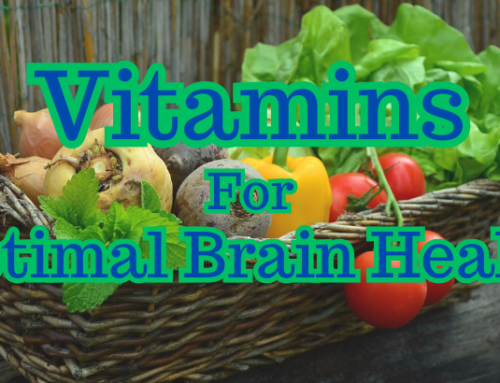

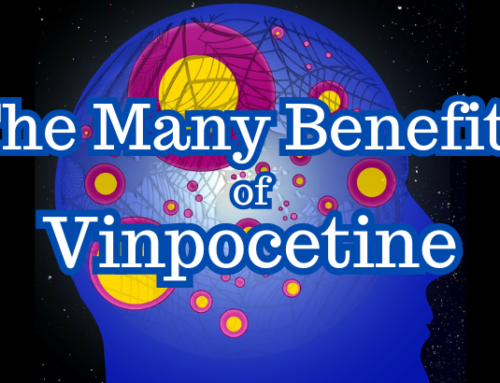
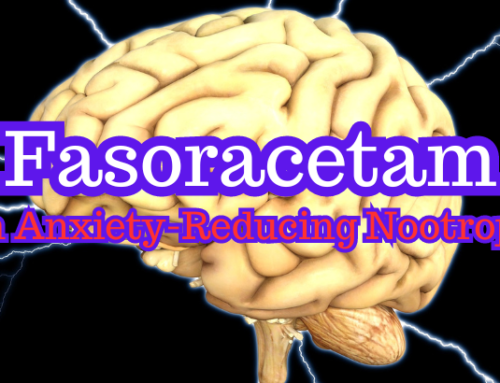
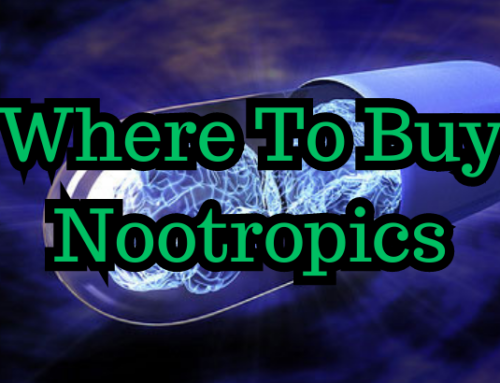

Leave a Reply